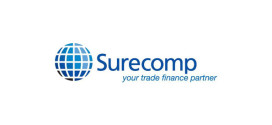
bringing further significance to MENA trade
New money has now entered the trade finance field to boost liquidity levels and reduce the risks involved. LIZ SALECKA explains who is behind the trend
While collaborations between banks, entered on both a funded and unfunded basis, have done much to address growing demand for more – and ever larger – trade finance facilities, there is a growing recognition that, in the future, banks alone will be unable to satisfy demand for this type of financing.
As a result, in line with global trends, many major players in the Middle East now recognise the need to attract alternative investors, such as pension funds, insurance companies and hedge funds, to trade finance to boost the liquidity levels available and reduce the risks involved.
This is considered particularly pertinent today given that Basel III places greater capital requirements on trade finance loans, and is expected to add to the constraints on banks’ provision of trade finance, alongside existing bank counterparty and country risk limits.
 The practice of secondary market syndications, which enable alternative investors to participate in trade and supply chain finance transactions, has already been successfully tried and tested by leading trade finance banks.
The practice of secondary market syndications, which enable alternative investors to participate in trade and supply chain finance transactions, has already been successfully tried and tested by leading trade finance banks.
Alternative investors have proved willing participants because they are provided with a relatively low-risk investment medium, which generates a respectable return. Pension funds, for example, have been attracted to trade finance because it enables them to further diversify their portfolios, and thereby reduce risk, by providing the opportunity to invest in diverse assets originated from a large number of counterparties across multiple countries.
At Arab Bank, Nadya Talhouni, senior vice president – head of cash management and trade finance, believes that alternative investors will be attracted to trade finance in the MENA region because of the strong growth prospects anticipated for this type of financing for decades to come.
“Although some of this growth could be due to the energy sector, we can assume that a significant portion is attributable to the continued diversification of the oil-producing economies, leading to expansion in a variety of other sectors. Furthermore, the UAE has become an important logistics hub internationally, bringing further significance to MENA trade finance,” she says. “Such increase in volumes will encourage other participants into this business, including retail banks, which may traditionally not be involved in such lines of business.”
She points out that the development of a secondary market in trade finance assets will further develop liquidity in the market and ensure that other participants, alongside the traditional banking industry, can participate in trade finance. “A secondary market is key to investors as it provides them with an outlet to buy and sell assets,” she says.
Middle East ‘shines’

for structured trade and export fi nance, Deutsche
Bank. He believes that rising demand for funding
will attract new investors
Similarly, at Deutsche Bank, Piers Constable, Head of Middle East and Africa for structured trade and export finance, believes that rising demand for funding in the Middle East will help to attract new types of investors.
“Alternative investors may not have the ability to originate export and trade finance-related assets but want to come into the equation. The Middle East is a growth region and the needs are likely to be greater. Europe and Asia are not growing at the same rate so there may be more opportunity here,” he says.
And he adds, “To tap into alternative investors, banks need to have wide distribution networks and it helps if they are engaged with these investors in other business areas and in relation to other assets. This means that large global banks have a natural advantage, but that is not to say that local banks in the region will not look to attract them to financings, too.”
However, while the desire to attract non-bank investors to trade finance assets through syndications is already evident, there is now a movement by banks globally to encourage – and facilitate – even greater participation from pension funds, insurance companies and hedge funds by securitising their trade finance assets.
This involves pooling together varied trade and supply chain finance assets from multiple obligators into a Special Purpose Vehicle (SPV) to achieve diversity; packaging them together for securitisation; and then selling tranches of trade finance securities with maturities of one to five years or longer, backed by the pool, to alternative investors.
Such structures are considered particularly pertinent given Basel III’s capital requirements because they enable the true sale of trade finance assets from a bank’s balance sheets.
Although the practise of securitisation is still in its infancy in the Middle East, there is growing recognition that it could play a bigger role in addressing any future bank liquidity issues. Despite the solid capitalisation of the region’s banks, many of them rely heavily on short-term borrowings such as customer deposits and money market products to fund lending.
“This strategy ultimately is expected to add more pressure on banks’ liquidity management in the long-run,” says Musa Ramahi, partner, Deloitte and Touche in the Middle East. “One of the possible solutions to secure funding at low cost, manage liquidity risk, and thereby improve profitability could be long-term securitised issuance.”
Complexity and cost
However, the securitisation of trade finance assets can prove very challenging for most banks because of the complexities and costs involved as well as legal considerations.
Securitisations require banks to pool together a large and diversified group of underlying assets from different countries with a total value of at least $100m to cover the high set-up and legal costs involved as well as on-going maintenance costs.
As the securitised assets have longer maturities than the underlying trade finance assets, such structures also require banks to keep replenishing the securitised pool on an ongoing basis with new trade finance assets.
For these reasons, trade finance securitisations have to date remained the preserve of the largest players, but other options are now becoming available including the opportunity to take advantage of other banks’ expertise.
Global banks such as Citi have taken a lead here by pioneering the concept of multi-bank trade finance platforms. According to John Ahearn, global head of trade, Citi, the bank’s Multi-Bank Global Trade Programme (Trade MAPS) represents another way in which Citi is supporting the global trade market and providing the means by which trade banks can grow their trade finance portfolios in an efficient and effective way.
Trade MAPS allows multiple banks to come together for the securitisation of their trade finance assets, thereby ensuring the scale and diversity required for the securitisation, while also enabling the participating banks to share costs.
“The programme is designed to benefit the broader industry by establishing an origination and funding platform for trade banks with global market positions and creating a highly diversified and granular pool of assets, which ultimately translates into access to a new and wider investor base,” he explains.
He adds that participants in the program benefit from the opportunity to increase the amount of capital they can dedicate to trade finance because Trade MAPS mitigates the impact of Basel III through the true sale of trade finance assets.
 Cash And Trade Magazine For Cash and Trade professionals in the Middle East
Cash And Trade Magazine For Cash and Trade professionals in the Middle East





One comment